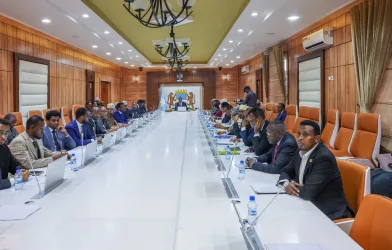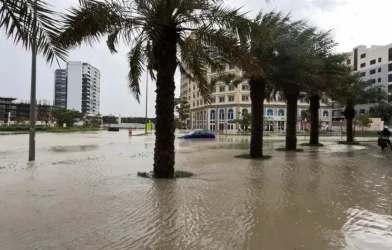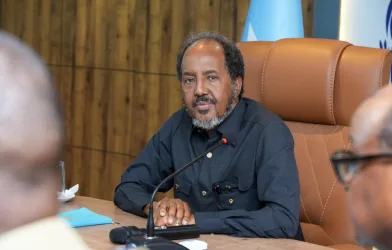 UNITED NATIONS (AP) The director of U.N. humanitarian operations appealed for hundreds of millions of dollars to alleviate major humanitarian emergencies in Yemen, where 10.5 million people need food, and in Somalia, where all the indicators point to a repeat of its 2011 famine.
UNITED NATIONS (AP) The director of U.N. humanitarian operations appealed for hundreds of millions of dollars to alleviate major humanitarian emergencies in Yemen, where 10.5 million people need food, and in Somalia, where all the indicators point to a repeat of its 2011 famine.
John Ging, who visited both countries last week, told a news conference Wednesday that the U.N.’s response is limited because it has received only $195 million of the $529 million it needs in Yemen this year and only $232 million of the $933 million it needs in Somalia.
“Neither of these countries are doomed to fail” because they have clear plans, very good national leaders and “real opportunities,” he said. “But the difference right now between whether they will go on a trajectory which is positive or … continue a decline into the abyss is fundamentally down to … the money that the international community will mobilize for both of these countries.”
Ging said the humanitarian situation in Yemen is driven by political instability, insecurity and an economic crisis that has left the country “on the brink of an economic collapse.” He said Yemen’s dependence on the mild stimulant known as Khat is undermining its development because the drug affects health and the economy and its cultivation consumes 70 percent of the country’s scarce water resources.
At the moment, he said, all indicators are deteriorating: 14.7 million people, or 58 percent of Yemen’s population, need humanitarian assistance, 10.5 million need food help and 4.5 million are dependent on international food aid.
But only one million people in Yemen are currently receiving food assistance, Ging said.
Ted Chaiban, the emergency director of the U.N. children’s agency UNICEF who traveled with Ging, said that in terms of malnutrition, one in five Yemeni children is underweight, and 58 percent are stunted.
“That means that after Afghanistan, in the whole world Yemen has the second-highest level of chronic malnutrition,” he said.
In Somalia, Ging said, international anti-terrorism laws are limiting the diaspora’s ability to transfer critically needed money home.
As a result, people who aren’t getting that money are seeking help from the international community, adding to the humanitarian crisis, he said.
Somalia is “very much at a crossroads,” Ging said, and “there is a moment of opportunity … after two and a half decades of chaos and crisis.”
But he said one million Somalis are displaced in the country, 1.1 million have fled to neighboring countries, 875,000 are in acute need of food and 2 million “are classified as stressed.”
“We see in Somalia all of the elements of 2010 which led us into the famine of 2011,” Ging said. “So our message is very clear, we need to address these issues. Otherwise, we’ll have the same result that we had in 2011.”
Chaiban said 50,000 Somali children are severely malnourished, including many at risk of death in weeks if they don’t get needed treatment.
“We have a small but critical window to do what’s needed to prevent a repeat of 2011,” he said.
Source: AP







